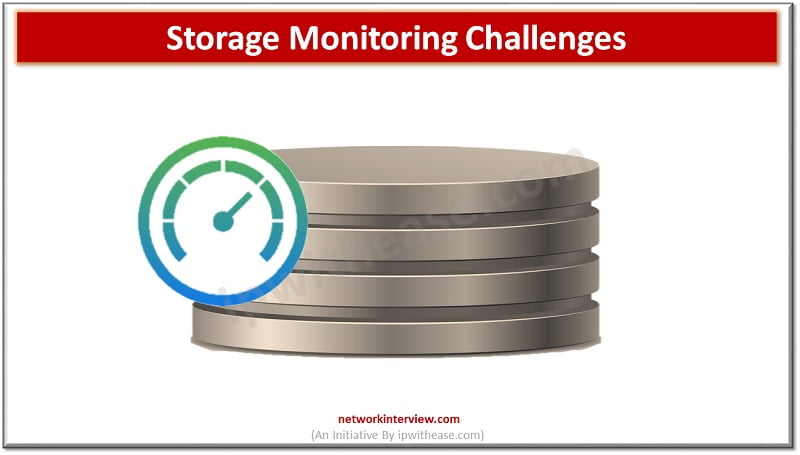
3 Key Storage Monitoring Challenges Every Admin Needs to Address
Estimates from organizations all around the globe have revealed that over 70% of enterprise data is being stored on servers on-premises, i.e., within the enterprise network. With such enormous amounts of data being handled, monitoring the devices that store and distribute this data becomes paramount in maintaining continuity across various levels of business operations.
ManageEngine OpManager is an integrated network monitoring solution that helps admins around the world monitor and manage their network devices more efficiently. OpManager also enables users to monitor storage infrastructure in real time, ensuring critical storage devices in the network are always in the best of health. With a diverse range of devices being supported (tape libraries, RAIDs, and FC switches), admins can stay fully updated about the status of these devices and ensure high availability and performance.
However, storage monitoring is not as simple as it might sound. Monitoring storage infrastructure has its limitations and disadvantages, and some of them can have a huge impact on overall network performance. Below are a few challenges commonly faced by IT admins while planning and executing a comprehensive storage monitoring strategy.
Key Storage Monitoring Challenges
1. The need to use multiple monitoring tools for every vendor or device type.
Most vendors provide storage monitoring and management tools that were developed in-house. The limitation with them is that a single tool can only monitor devices of a certain type or, at best, monitor devices of the same vendor. So if a network that involves multiple vendors has to be monitored, a good amount of time and resources must be spent on gathering and processing data from multiple monitoring tools.
2. Lack of threshold-based monitoring and real-time alerting.
Vendor-based tools are mostly limited in terms of monitoring capabilities. They do not support threshold-based monitoring or alerting, which are available in most network monitoring tools as a standard feature. Without built-in real-time alerting, admins are forced to resort to using additional alerting tools to stay updated on the devices’ health and performance, which only makes the monitoring process more complex.
3. Improper storage planning and procurement.
One of the main concerns with managing and monitoring storage infrastructure is understanding its growth rate and how frequently your storage needs to be upgraded for additional space. Predicting these needs in a growing enterprise network is extremely complicated, and one wrong move could put the entire network in danger of running out of storage space.
Do you experience these issues in your storage network too? Do you feel like a unified storage monitoring solution that addresses all these issues would go a long way in making your network deliver its best performance constantly? Do you think understanding growing storage needs will help you make informed decisions regarding additional storage procurement?
If your answer is yes to any of these questions, OpManager is the ultimate solution to improving your storage monitoring capabilities. With support for over 25 major storage device vendors and built-in support for critical storage monitors, you don’t have to look anywhere else for a comprehensive network monitoring solution.
Resolving key storage monitoring challenges using OpManager
1. A unified console for all your network devices, including storage elements.
OpManager lists all monitored devices, including servers, switches, routers, and storage elements like RAIDs, tape libraries, and FC switches, in a single pane so you can view all the devices in your network—and their status—at a glance. You can also filter devices based on category, type, vendor, or protocol.
2. Fully customizable threshold-based monitoring and alerting.
OpManager allows you to monitor critical storage metrics like disk reads/writes per second, capacity utilization, and disk I/O rates and raise alerts based on three levels of severity: Attention, Trouble, and Critical. Whenever the monitored metrics cross the user-configured thresholds, a corresponding alert for that level of severity is raised instantly in the web client. Alerts can also be sent as notifications to users across different media such as email or SMS or even be created as tickets in service desk solutions via integrations in OpManager.
3. Real-time storage forecasting to understand data growth trends.
Using special machine learning algorithms, OpManager identifies your current storage utilization and the rate at which the space is being used up, and provides highly reliable estimates of when you might run out of storage space in a special Storage Forecasting report. To make things much easier, OpManager displays three estimates that denote when the storage device(s) will reach 80%, 90%, and 100% of its total storage capacity, allowing admins to plan storage space procurement well in advance.
To see how this integrated network monitoring solution can help you achieve the best performance from your storage infrastructure, schedule a free, personalized demo of OpManager now.
Continue Reading:
Top 10 Penetration Testing Tools & Software
Tag:services



